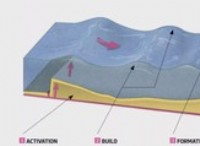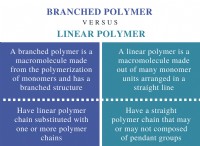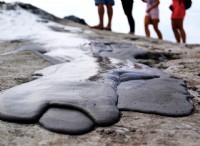2004 년 인도양 쓰나미의 여파로 230,000 명이 넘는 사람들의 삶을 주장한 일본의 엔지니어 그룹은 사람들이 미래의 쓰나미에서 살아남는 데 도움이 될 수있는 생명을 구하는 장치를 설계하기 시작했습니다. 그 결과 쓰나미 포드는 쓰나미의 치명적인 힘으로부터 최대 4 명을 보호 할 수있는 작고 휴대용이며 자체 포함 된 대피소였습니다.
The tsunami pod is made of a lightweight, durable material that can withstand the impact of debris and rushing water. It is also equipped with a built-in air supply and a water filter, so that occupants can survive for up to 24 hours without food or water. The pod also has a radio beacon that can be used to track its location in case it is swept away from shore.
The tsunami pod has been successfully tested in a variety of conditions, including in the open ocean and in flooded areas. It is currently being marketed to coastal communities around the world as a potential life-saving device. However, the tsunami pod comes with a hefty price tag of around $10,000. This has made it unaffordable for many people in developing countries, where tsunamis are most common.
Despite its high cost, the tsunami pod has been praised for its potential to save lives. In the event of a tsunami, it could provide a safe haven for people who would otherwise be swept away or drowned. However, more affordable options need to be developed in order to make the tsunami pod accessible to people in all socioeconomic groups.
Pros of the Tsunami Pod:
* Can save lives in the event of a tsunami
* Small and portable
* Self-contained with air supply and water filter
* Has a radio beacon for tracking
Cons of the Tsunami Pod:
* 값비싼
* Unaffordable for many people in developing countries
* Not widely available





